With the increased number of dairy cows, the scarcity of labour and the increased popularity of dairy calf to beef systems, many farmers are looking at computerised solutions to calf feeding problems.
Computerised calf feeders have become a lot more popular, aided in no small part by the introduction of a new grant for computerised calf feeders among other types of calf feeders.
Some of these feeders trade under different names in Ireland
The closing date for receipt of applications to this Calf Investment Scheme has passed, but farmers who applied for the scheme can still decide on what type of feeder they intend to buy.
In the main, there are four makes of computerised calf feeders for sale in Ireland. These are Forster Technik, Holm and Laue, JFC and Urban.
Apart from JFC which is made in Ireland, all the other computerised calf feeders are manufactured in Germany.
Some of these feeders trade under different names in Ireland.
For example, Forster Technik calf feeders are sold under a number of different brands including Volac, DeLaval, Lely and GEA.
Holm and Laue are sold in their own colours in Northern Ireland, but are sold under Dairymaster colours in the south.
Volac are also main distributors for the Urban range of calf feeders while JFC manufacture and sell their own range in Ireland.
How they work
There are three main components to a computerised calf feeder and each of the manufacturers follows this basic system.
The first is the computer part, made up of hardware (screen, keypad and micro-processing unit) and software. The software deals with registering calves on the programme and feed plans.
Most of the feeders offer multiple types of feed plans which can be tailored to suit individual needs.
Generally, calves are built up gradually to a high feed rate and feeding frequency before the rate of feed and the frequency of the feeding reduces as the calf is being weaned
The feed plan details how long the calf will be on the feeder and how much feed the calf will get per day, plus how many times the calf will be fed per day.
Generally, calves are built up gradually to a high feed rate and feeding frequency before the rate of feed and the frequency of the feeding reduces as the calf is being weaned.
The next component is the mixing station, which houses the computer, the hopper for the milk replacer, water heater and the mixing bowl.
An auger dispenses the required amount of milk powder into the mixing bowl and this is mixed with warm water.
From there, the milk is pumped to the third element of a computerised calf feeder – the feed station.
This is where the calf gets fed. It is a stall, allowing one calf to feed at a time. An electronic tag reader identifies the calf as it enters the stall and the computer decides if that calf is due a feed.
Computerised calf feeders can come with one to four feed stations
If it is, the mixer kicks into action and the milk is pumped to the teat the calf is on.
In most machines, the pump is activated by the sucking action of the calf.
Computerised calf feeders can come with one to four feed stations. How many calves each station can feed is determined by the capacity of the mixing station.
Key considerations
Deciding on purchasing a computerised calf feeder is a big decision. They are a relatively high capital cost at around €14,500 plus VAT.
However, despite the capital cost they can reduce the running costs of feeding calves, primarily through lower labour costs. Computerised feeders do not eliminate labour, but they do reduce it.
In a 2019 study conducted at Teagasc Moorepark, it was found that 30 calves fed with a computerised feeder had a labour requirement of 53 seconds per calf per day, while calves fed twice a day with manual feeders had a labour requirement of two minutes and 21 seconds per calf per day. There was no difference in weight gain between the two systems.
Running and maintenance costs of a computerised feeder are higher than a manual feeder.
In cold weather, the water supply to the feeder will be at a lower temperature. While frozen pipes are obviously a big concern, cold water also affects performance
Depending on how many calves are on the feeder, the mixer could be running for more than 12 hours per day, which consumes electricity. An annual service charge and wear and tear on parts should also be taken into account.
Another consideration, particularly where a high stocking rate is being planned, is the impact of weather.
In cold weather, the water supply to the feeder will be at a lower temperature. While frozen pipes are obviously a big concern, cold water also affects performance.
This is because most feeders are calibrated to mix the milk at the same consistent temperature.
If the water coming in is cold, it will take longer for it to heat up so the throughput of the feeder will be reduced when weather is cold. This has a double effect as by right, calves should be getting more feeds in cold weather, not less.
However, this really only has an effect when the feeder is operating at maximum capacity.
Some farmers overcome this by opting for a three-phase machine which has a higher out water heater, or by pre-heating the water before it goes into the feeder.
Forster Technik
As mentioned, Forster Technik is available under a number of different brands, but Volac is the main distributor in Ireland. For calves, the Vario Smart is the most common feeder.

Forster Technik calf feeders come under a number of different brand names.
The automatic feeder records the feed consumption per calf so the farmer always has an overview of how each animal is performing.
If a calf’s feeding behaviour changes, the feeder immediately reports it – allowing the farmer to respond quickly and prevent illness.
Forster Technik is internet-enabled as standard and farmers can track performance on their smartphones with free apps.
Four calves can be fed at the one time
This machine can be operated with whole milk or powder and cleaning is fully automated. Four calves can be fed at the one time.
According to Volac, the price for a four-station powder only machine, capable of feeding 120 calves is €14,500.
Urban
Urban recently launched its new computerised calf feeder featuring a new touchscreen model with full control and alarm function with iPhone, iPad, Android and Windows smartphone as well as via PC.
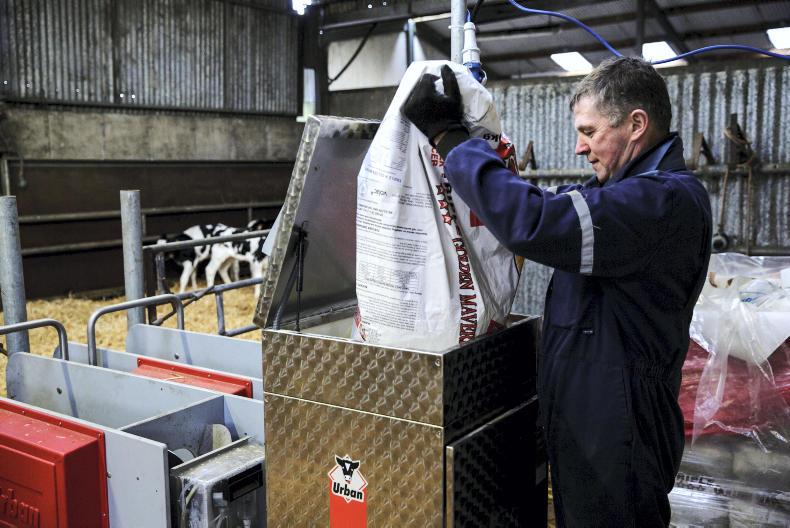
An Urban calf feeder on Henry O'Keeffe's farm in Cork. \ Donal O'Leary
With the smart device or PC, the farmer can use all the functions of the Urban Alma Pro – from monitoring right through to adjusting the feeding curves.
A colour-coded alarm system alerts the farmer to a problem or to a suspect calf. This alert will be sent to your phone if you are not in the shed.
Another new feature is the Urban’s new Hygiene Station which features a retractable fully automatic teat cleaning process that is carried out after each calf drinks.
Four calves can be fed at the one time. The typical cost of an Urban feeder for 120 calves is €14,500 plus VAT.
Holm and Laue (Dairymaster)
According to Dairymaster, one of the unique selling points of this machine is that a fresh portion of milk is prepared each time a calf that is due a feed enters the feed station.
The machine has a 7in graphical display unit at the feed station with smart keys. Up to eight feed plans can be pre-programmed.
Feeding is based on 24-hour logic, meaning throughput is high. The machine can feed four calves at the one time, meaning it has a high output.
It has the option of either whole milk or milk replacer and powder or liquid additive dispensers can also be installed.
A smartphone app is available to view information and sounds an alarm if the powder hopper is empty, etc.
An external light can be fitted to the outside of the shed to alert the farmer of any issues with the feeder.
The typical cost of a four station powder based machine capable of feeding 120 calves is €14,500 plus VAT.
JFC
The new JFC computerised calf feeder was launched in 2018. There are two models to choose from: the Evolution S2 and the Evolution S4.
The S2 has two stations and is capable of feeding 70 calves, while the S4 has four stations capable of feeding 140 calves, making it one of the highest-capacity feeders on the market.
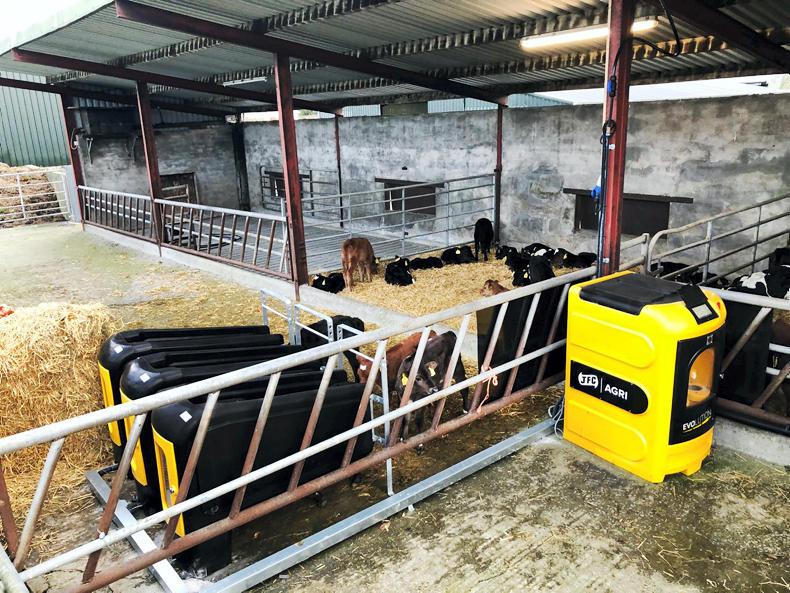
JFC Evolution Calf Feeder.
The S4 has two hoppers so two different types of powder can be fed. Each feed station can be located up to 7m from the mixing station.
All four feed stations can be fed at the one time but the feeders can only feed milk powder, not whole milk. A JFC S4 Evolution costs €14,500 plus VAT.
Read more
Milk replacer prices on the rise
Dairy management: attention turns to grass
With the increased number of dairy cows, the scarcity of labour and the increased popularity of dairy calf to beef systems, many farmers are looking at computerised solutions to calf feeding problems.
Computerised calf feeders have become a lot more popular, aided in no small part by the introduction of a new grant for computerised calf feeders among other types of calf feeders.
Some of these feeders trade under different names in Ireland
The closing date for receipt of applications to this Calf Investment Scheme has passed, but farmers who applied for the scheme can still decide on what type of feeder they intend to buy.
In the main, there are four makes of computerised calf feeders for sale in Ireland. These are Forster Technik, Holm and Laue, JFC and Urban.
Apart from JFC which is made in Ireland, all the other computerised calf feeders are manufactured in Germany.
Some of these feeders trade under different names in Ireland.
For example, Forster Technik calf feeders are sold under a number of different brands including Volac, DeLaval, Lely and GEA.
Holm and Laue are sold in their own colours in Northern Ireland, but are sold under Dairymaster colours in the south.
Volac are also main distributors for the Urban range of calf feeders while JFC manufacture and sell their own range in Ireland.
How they work
There are three main components to a computerised calf feeder and each of the manufacturers follows this basic system.
The first is the computer part, made up of hardware (screen, keypad and micro-processing unit) and software. The software deals with registering calves on the programme and feed plans.
Most of the feeders offer multiple types of feed plans which can be tailored to suit individual needs.
Generally, calves are built up gradually to a high feed rate and feeding frequency before the rate of feed and the frequency of the feeding reduces as the calf is being weaned
The feed plan details how long the calf will be on the feeder and how much feed the calf will get per day, plus how many times the calf will be fed per day.
Generally, calves are built up gradually to a high feed rate and feeding frequency before the rate of feed and the frequency of the feeding reduces as the calf is being weaned.
The next component is the mixing station, which houses the computer, the hopper for the milk replacer, water heater and the mixing bowl.
An auger dispenses the required amount of milk powder into the mixing bowl and this is mixed with warm water.
From there, the milk is pumped to the third element of a computerised calf feeder – the feed station.
This is where the calf gets fed. It is a stall, allowing one calf to feed at a time. An electronic tag reader identifies the calf as it enters the stall and the computer decides if that calf is due a feed.
Computerised calf feeders can come with one to four feed stations
If it is, the mixer kicks into action and the milk is pumped to the teat the calf is on.
In most machines, the pump is activated by the sucking action of the calf.
Computerised calf feeders can come with one to four feed stations. How many calves each station can feed is determined by the capacity of the mixing station.
Key considerations
Deciding on purchasing a computerised calf feeder is a big decision. They are a relatively high capital cost at around €14,500 plus VAT.
However, despite the capital cost they can reduce the running costs of feeding calves, primarily through lower labour costs. Computerised feeders do not eliminate labour, but they do reduce it.
In a 2019 study conducted at Teagasc Moorepark, it was found that 30 calves fed with a computerised feeder had a labour requirement of 53 seconds per calf per day, while calves fed twice a day with manual feeders had a labour requirement of two minutes and 21 seconds per calf per day. There was no difference in weight gain between the two systems.
Running and maintenance costs of a computerised feeder are higher than a manual feeder.
In cold weather, the water supply to the feeder will be at a lower temperature. While frozen pipes are obviously a big concern, cold water also affects performance
Depending on how many calves are on the feeder, the mixer could be running for more than 12 hours per day, which consumes electricity. An annual service charge and wear and tear on parts should also be taken into account.
Another consideration, particularly where a high stocking rate is being planned, is the impact of weather.
In cold weather, the water supply to the feeder will be at a lower temperature. While frozen pipes are obviously a big concern, cold water also affects performance.
This is because most feeders are calibrated to mix the milk at the same consistent temperature.
If the water coming in is cold, it will take longer for it to heat up so the throughput of the feeder will be reduced when weather is cold. This has a double effect as by right, calves should be getting more feeds in cold weather, not less.
However, this really only has an effect when the feeder is operating at maximum capacity.
Some farmers overcome this by opting for a three-phase machine which has a higher out water heater, or by pre-heating the water before it goes into the feeder.
Forster Technik
As mentioned, Forster Technik is available under a number of different brands, but Volac is the main distributor in Ireland. For calves, the Vario Smart is the most common feeder.

Forster Technik calf feeders come under a number of different brand names.
The automatic feeder records the feed consumption per calf so the farmer always has an overview of how each animal is performing.
If a calf’s feeding behaviour changes, the feeder immediately reports it – allowing the farmer to respond quickly and prevent illness.
Forster Technik is internet-enabled as standard and farmers can track performance on their smartphones with free apps.
Four calves can be fed at the one time
This machine can be operated with whole milk or powder and cleaning is fully automated. Four calves can be fed at the one time.
According to Volac, the price for a four-station powder only machine, capable of feeding 120 calves is €14,500.
Urban
Urban recently launched its new computerised calf feeder featuring a new touchscreen model with full control and alarm function with iPhone, iPad, Android and Windows smartphone as well as via PC.

An Urban calf feeder on Henry O'Keeffe's farm in Cork. \ Donal O'Leary
With the smart device or PC, the farmer can use all the functions of the Urban Alma Pro – from monitoring right through to adjusting the feeding curves.
A colour-coded alarm system alerts the farmer to a problem or to a suspect calf. This alert will be sent to your phone if you are not in the shed.
Another new feature is the Urban’s new Hygiene Station which features a retractable fully automatic teat cleaning process that is carried out after each calf drinks.
Four calves can be fed at the one time. The typical cost of an Urban feeder for 120 calves is €14,500 plus VAT.
Holm and Laue (Dairymaster)
According to Dairymaster, one of the unique selling points of this machine is that a fresh portion of milk is prepared each time a calf that is due a feed enters the feed station.
The machine has a 7in graphical display unit at the feed station with smart keys. Up to eight feed plans can be pre-programmed.
Feeding is based on 24-hour logic, meaning throughput is high. The machine can feed four calves at the one time, meaning it has a high output.
It has the option of either whole milk or milk replacer and powder or liquid additive dispensers can also be installed.
A smartphone app is available to view information and sounds an alarm if the powder hopper is empty, etc.
An external light can be fitted to the outside of the shed to alert the farmer of any issues with the feeder.
The typical cost of a four station powder based machine capable of feeding 120 calves is €14,500 plus VAT.
JFC
The new JFC computerised calf feeder was launched in 2018. There are two models to choose from: the Evolution S2 and the Evolution S4.
The S2 has two stations and is capable of feeding 70 calves, while the S4 has four stations capable of feeding 140 calves, making it one of the highest-capacity feeders on the market.

JFC Evolution Calf Feeder.
The S4 has two hoppers so two different types of powder can be fed. Each feed station can be located up to 7m from the mixing station.
All four feed stations can be fed at the one time but the feeders can only feed milk powder, not whole milk. A JFC S4 Evolution costs €14,500 plus VAT.
Read more
Milk replacer prices on the rise
Dairy management: attention turns to grass







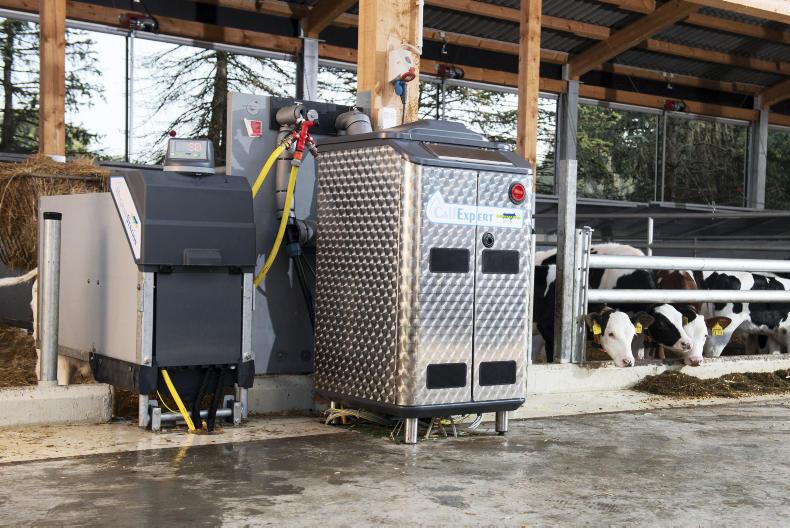
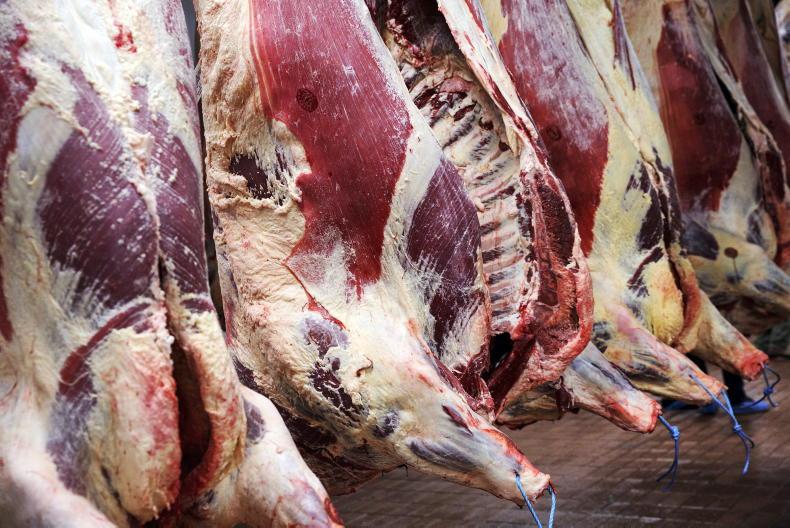

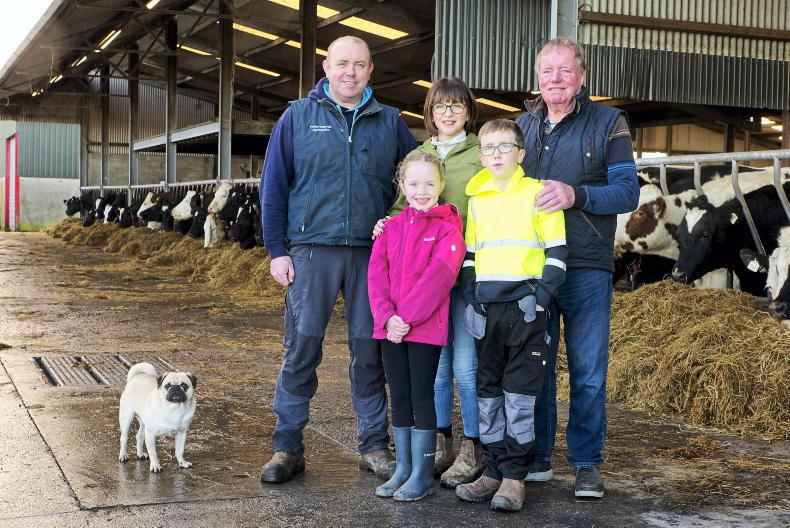
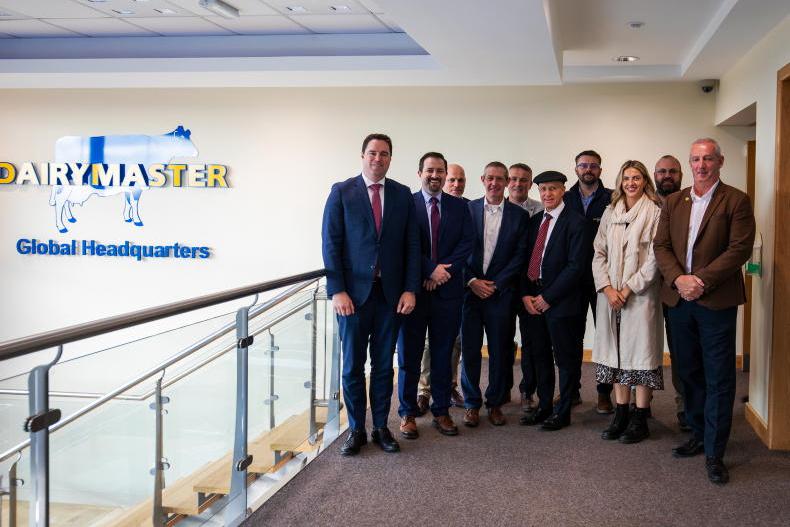
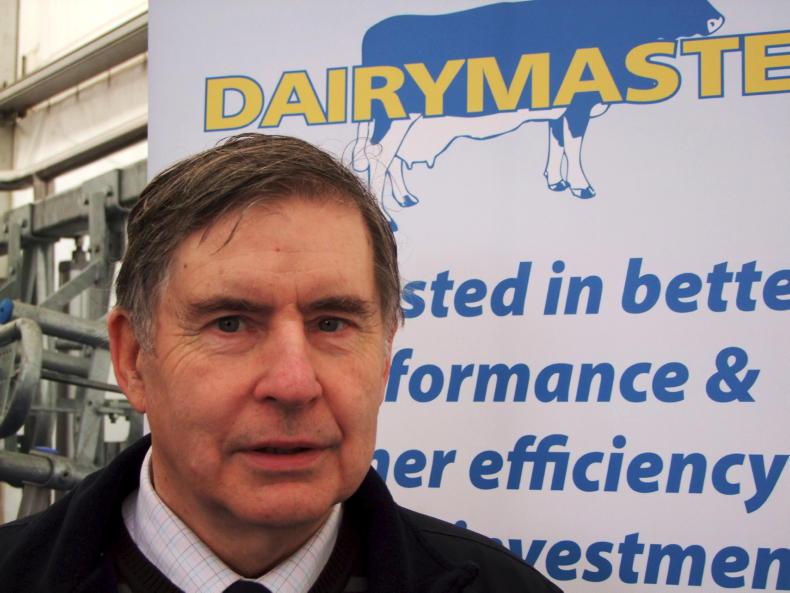
SHARING OPTIONS